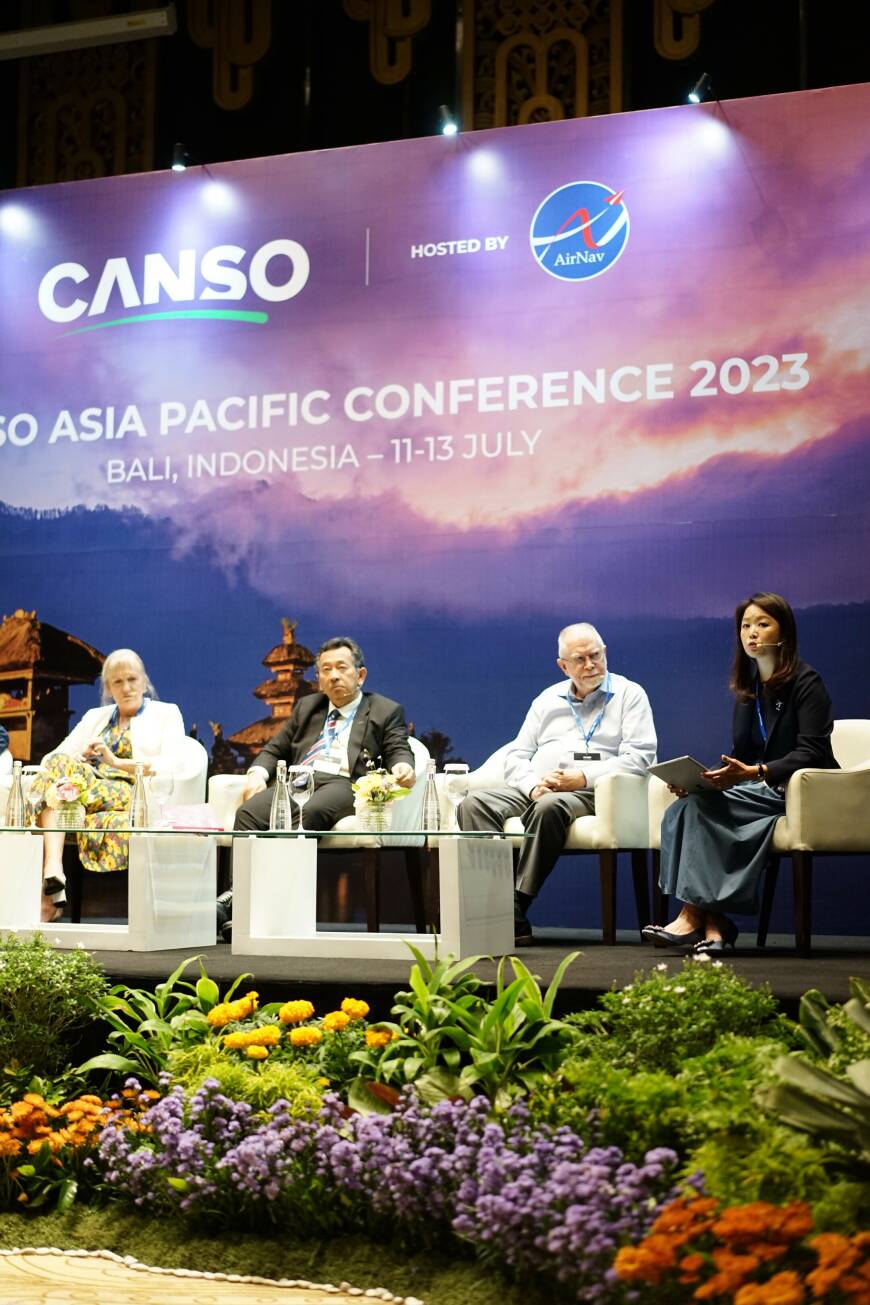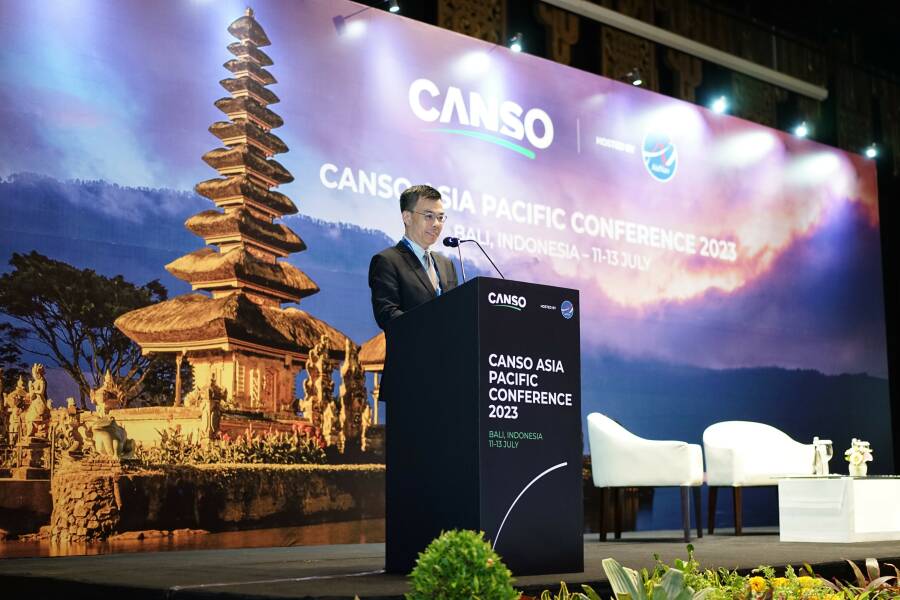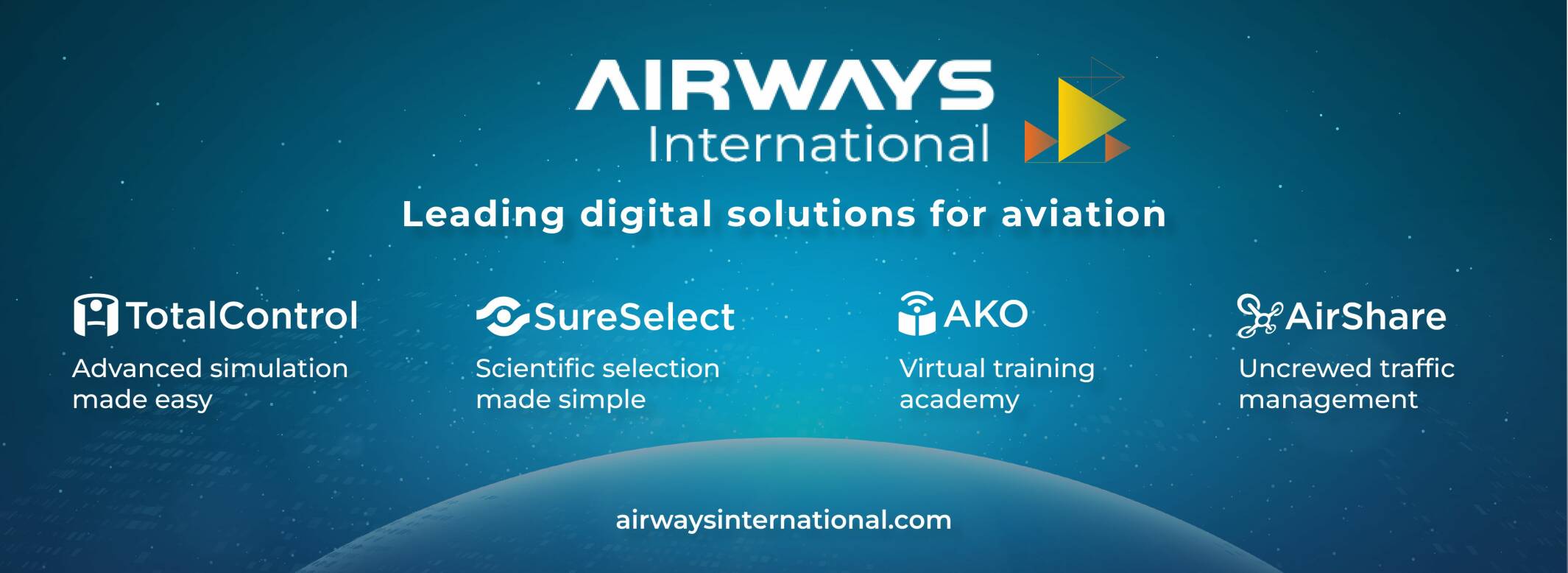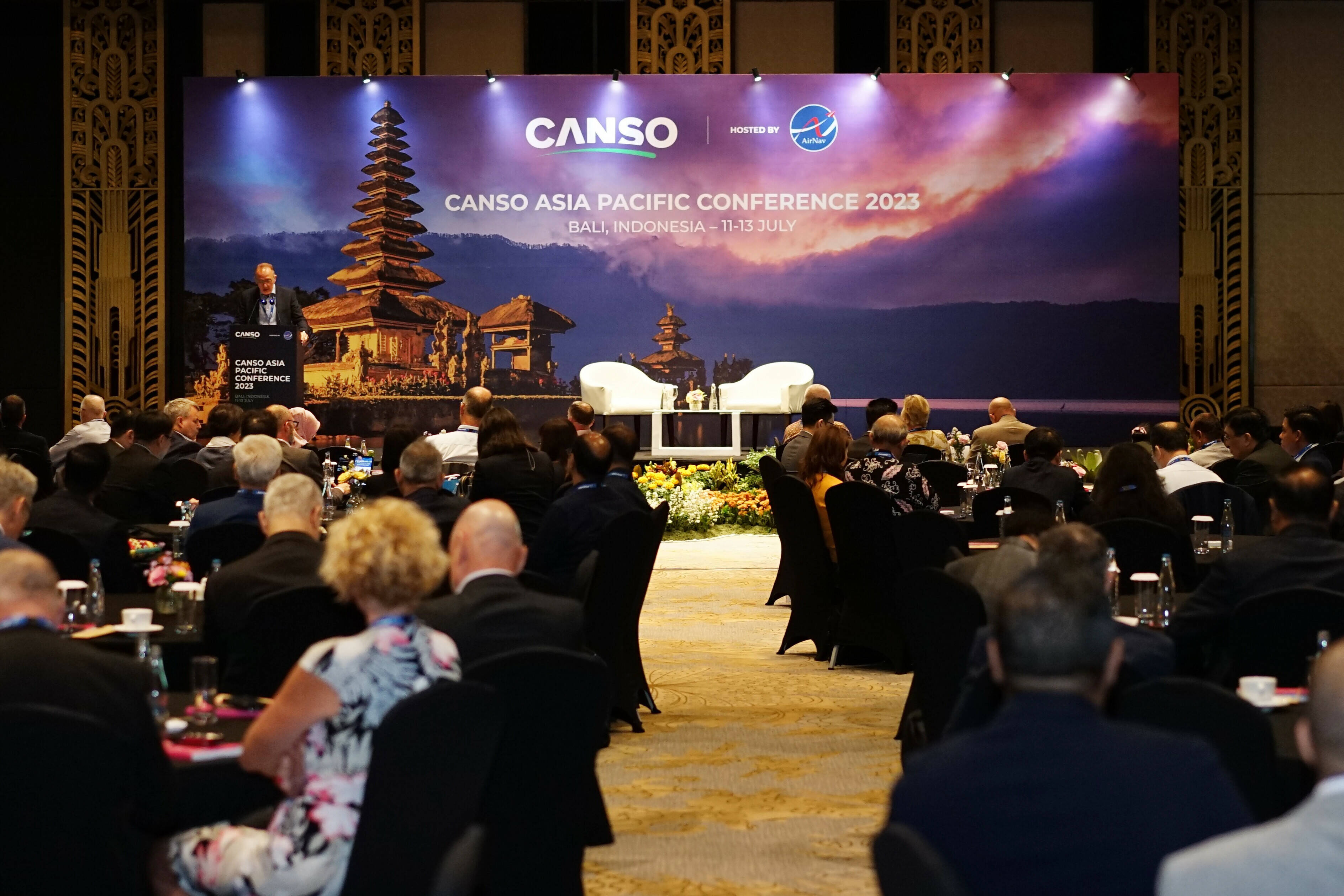
Airspace Article









Exhibitor
Exhibitor
Host and Exhibitor

Chairdrop Sponsor
Notebook Sponsor
Bronze Sponsor
Bronze Sponsor and Exhibitor
Bronze and Lanyard Sponsor
Bronze and Registration Desk Sponsor
Silver Sponsor and Exhibitor
Gold Sponsor

“The leadership retreat was thought provoking and we discussed many ideas that can benefit ANSPs in the region.”
Rakesh Bhatnagar
General Manager of Airports Authority of India
“The objective was to make the regional whole greater than the sum of its parts.”
Poh Theen Soh
Director Asia Pacific Affairs, CANSO




Aside from the conference, an Asia Pacific ANSP Committee met in Bangkok in April and established four work groups:
Reviewing investments in air navigation services, procurement requirements, and technology collaboration.
Accelerating implementation of seamless ATM and sustainability initiatives.
Collaborating on business continuity and contingency planning.
Supporting the operations of oceanic ANSPs which may have different needs from the rest.
The aim is to enable the region to leverage multiple pathways to progress. The ideas generated for the white paper, for example, will be used as inputs for the work groups, which are action oriented and focused on implementation.
“Harnessing the energy and will to improve, we can make regional activities mutually reinforcing,” Soh explains. “There are more opportunities for regional interaction ahead. The signs of emerging activism for regional ATM are encouraging.
“Asia Pacific will have its own kind of challenges ahead that are multifaceted,” he concludes. “They cannot be tackled at the two-dimensional level of operations and technology. Actions also need alignment at the policy level. The coherence of operations, technology, and policy is empowering.”
Leveraging regional efforts
There were numerous group activities on the sidelines of the event. THINK Research facilitated the first ever brainstorming retreat for Asia Pacific ANSP leadership. “The objective was to make the regional whole greater than the sum of its parts,” says Soh. The retreat topics included making procurement easier, cost and information sharing, business continuity, and flexible operations and concluded with a shortlist of potential collaboration projects.
“The leadership retreat was thought provoking and we discussed many ideas that can benefit ANSPs in the region,” says Rakesh Bhatnagar, General Manager of Airports Authority of India.
The ideas from the retreat and conference will be further analysed and crystalised in an Asia Pacific Regional ATM White Paper.
The Asia Pacific Safety Work Group, Operations Work Group and the Global Air Traffic Flow Management (ATFM) Work Group also met in Bali. Mitch Fox, Flight Safety Foundation’s Director, Asia Pacific Centre for Aviation Safety – who moderated a panel at the Safety Work Group – notes “a safety and business case for the region to work together on safety risk assessments”. The basis for that, he suggests, is the sharing of safety information between ANSPs.
Sideline activities

Following the event’s opening speeches, CANSO Chair, Alex Bristol, began proceedings, sharing his personal journey as an air traffic controller, and speaking about management challenges, especially the trend of ATM digitalisation.
The panel on regional ATM heard from IATA on customer expectations. It also featured the Federal Aviation Administration and Air Traffic Management Bureau talking about the role of leadership to achieve an ATM regional framework. Innovation and human resource development were also tackled from a range of viewpoints, including academia. Meanwhile, technology companies on the digitalisation panel debated how a system of systems approach could be the way forward.
Throughout, the conference was marked by rich content, active participation, and a diversity of views. All panels also emphasised the need for action. Chairman of the Asia Pacific CANSO CEO Committee, Han Kok Juan, challenged the conference to take more tangible steps given the intellectually compelling case for collective work while CANSO’s Director General, Simon Hocquard, suggested in his keynote address that collaboration would benefit from a more structured framework.
The Bali week not only achieved a meeting of minds but also the opportunity for colleagues in the region to renew their connection after a near-three-year pause due to the pandemic, a process which started at last year's CANSO Asia Pacific conference in Goa, India. There was a record turnout for the conference and social events. Several CANSO members also took the opportunity to hold bilateral meetings at the side.
Diversity of views
Hosted by AirNav Indonesia in Bali, CANSO’s four-day Asia Pacific Conference featured a wide array of engaging panel discussions with industry leaders tackling the toughest subjects, including:
Riding the Digitalisation Megatrend to Level Up
Fostering Culture and Talent Development for Innovation
Becoming the Architects of Regional ATM
The size of AirNav Indonesia’s operations made it the ideal host for these debates. AirNav manages 7,539,693km2 of airspace across two Flight Information Regions (FIR) based in Jakarta and Makassar. When normal traffic trends return, the air navigation service provider (ANSP) will handle more than 6,000 aircraft movements daily.
Polana B. Pramesti, Chief Executive Officer of AirNav Indonesia says that the conference was “beneficial for the development of the aviation industry in the nation as well as for AirNav Indonesia's provision of air navigation services.”
Poh Theen Soh, CANSO’s Director of Asia Pacific Affairs also believes the conference furthered air traffic management (ATM) in the region, noting a “palpable buzz in the air.”



Read full article







Exhibitor
Exhibitor
Host and Exhibitor

Chairdrop Sponsor

Notebook Sponsor

Bronze Sponsor
Bronze Sponsor and Exhibitor

Bronze and Lanyard Sponsor

Bronze and Registration Desk Sponsor
Silver Sponsor and Exhibitor
Gold Sponsor

Aside from the conference, an Asia Pacific ANSP Committee met in Bangkok in April and established four work groups:
Reviewing investments in air navigation services, procurement requirements, and technology collaboration.
Accelerating implementation of seamless ATM and sustainability initiatives.
Collaborating on business continuity and contingency planning.
Supporting the operations of oceanic ANSPs which may have different needs from the rest.
The aim is to enable the region to leverage multiple pathways to progress. The ideas generated for the white paper, for example, will be used as inputs for the work groups, which are action oriented and focused on implementation.
“Harnessing the energy and will to improve, we can make regional activities mutually reinforcing,” Soh explains. “There are more opportunities for regional interaction ahead. The signs of emerging activism for regional ATM are encouraging.
“Asia Pacific will have its own kind of challenges ahead that are multifaceted,” he concludes. “They cannot be tackled at the two-dimensional level of operations and technology. Actions also need alignment at the policy level. The coherence of operations, technology, and policy is empowering.”
Leveraging regional efforts

There were numerous group activities on the sidelines of the event. THINK Research facilitated the first ever brainstorming retreat for Asia Pacific ANSP leadership. “The objective was to make the regional whole greater than the sum of its parts,” says Soh. The retreat topics included making procurement easier, cost and information sharing, business continuity, and flexible operations and concluded with a shortlist of potential collaboration projects.
“The leadership retreat was thought provoking and we discussed many ideas that can benefit ANSPs in the region,” says Rakesh Bhatnagar, General Manager of Airports Authority of India.
The ideas from the retreat and conference will be further analysed and crystalised in an Asia Pacific Regional ATM White Paper.
The Asia Pacific Safety Work Group, Operations Work Group and the Global Air Traffic Flow Management (ATFM) Work Group also met in Bali. Mitch Fox, Flight Safety Foundation’s Director, Asia Pacific Centre for Aviation Safety – who moderated a panel at the Safety Work Group – notes “a safety and business case for the region to work together on safety risk assessments”. The basis for that, he suggests, is the sharing of safety information between ANSPs.
Sideline activities
The size of AirNav Indonesia’s operations made it the ideal host for these debates. AirNav manages 7,539,693km2 of airspace across two Flight Information Regions (FIR) based in Jakarta and Makassar. When normal traffic trends return, the air navigation service provider (ANSP) will handle more than 6,000 aircraft movements daily.
Polana B. Pramesti, Chief Executive Officer of AirNav Indonesia says that the conference was “beneficial for the development of the aviation industry in the nation as well as for AirNav Indonesia's provision of air navigation services.”
Poh Theen Soh, CANSO’s Director of Asia Pacific Affairs also believes the conference furthered air traffic management (ATM) in the region, noting a “palpable buzz in the air.”
Hosted by AirNav Indonesia in Bali, CANSO’s four-day Asia Pacific Conference featured a wide array of engaging panel discussions with industry leaders tackling the toughest subjects, including:
Riding the Digitalisation Megatrend to Level Up
Fostering Culture and Talent Development for Innovation
Becoming the Architects of Regional ATM
Following the event’s opening speeches, CANSO Chair, Alex Bristol, began proceedings, sharing his personal journey as an air traffic controller, and speaking about management challenges, especially the trend of ATM digitalisation.
The panel on regional ATM heard from IATA on customer expectations. It also featured the Federal Aviation Administration and Air Traffic Management Bureau talking about the role of leadership to achieve an ATM regional framework. Innovation and human resource development were also tackled from a range of viewpoints, including academia. Meanwhile, technology companies on the digitalisation panel debated how a system of systems approach could be the way forward.
Throughout, the conference was marked by rich content, active participation, and a diversity of views. All panels also emphasised the need for action. Chairman of the Asia Pacific CANSO CEO Committee, Han Kok Juan, challenged the conference to take more tangible steps given the intellectually compelling case for collective work while CANSO’s Director General, Simon Hocquard, suggested in his keynote address that collaboration would benefit from a more structured framework.
The Bali week not only achieved a meeting of minds but also the opportunity for colleagues in the region to renew their connection after a near-three-year pause due to the pandemic, a process which started at last year's CANSO Asia Pacific conference in Goa, India. There was a record turnout for the conference and social events. Several CANSO members also took the opportunity to hold bilateral meetings at the side.
Diversity of views

Airspace Article